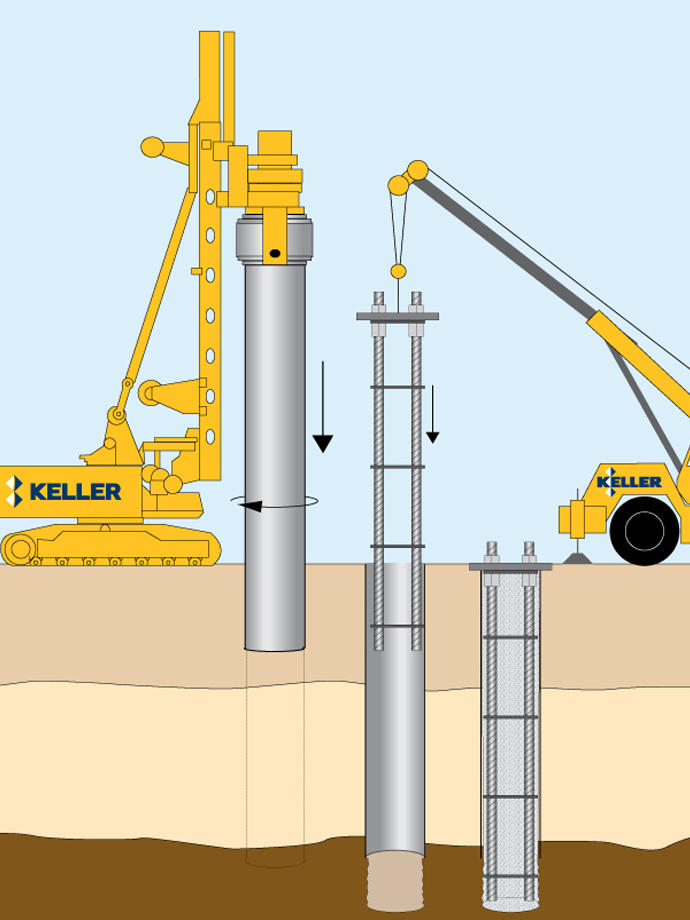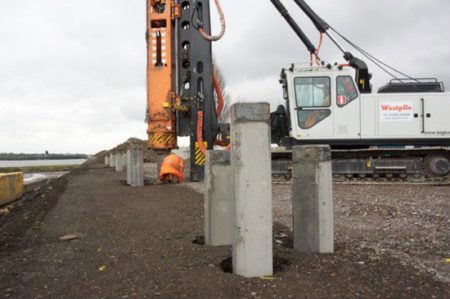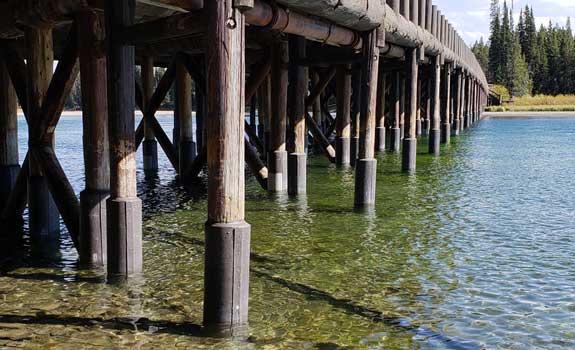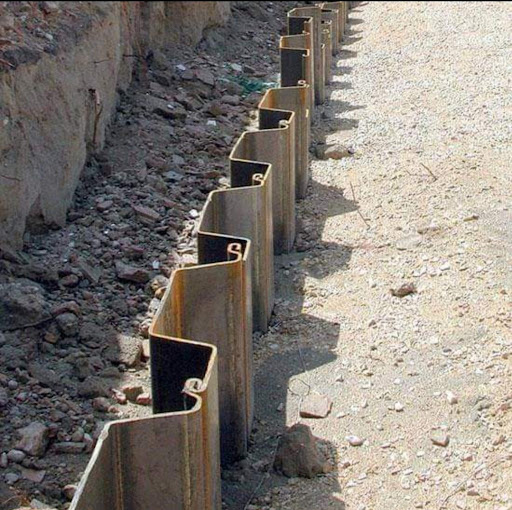Piling
Piling
Building engineers use piling to
secure the foundations of a construction site before they begin building
infrastructure on top. It's a key step in the construction process that
contractors use to boost the safety and reliability of a project. Piling is an
important technical skill that requires confidence and a collaborative team
dynamic. If you're seeking a role in the construction industry, it's essential
to be knowledgeable about the different piling types and methods.
What is piling?
Piling is the process of drilling
foundations through the ground to provide more structural strength to the weak
soil underneath. Piling prepares the ground to carry heavy loads, such as a new
home, office complex, road or another piece of infrastructure.
Piles usually are long poles that
are made of timber, steel or concrete. Its shape, circumference and weight may
vary depending on the conditions of the soil and the demands of the project.
For example, piles may need to carry uplift loads to support taller structures,
such as skyscrapers. In this case, engineers need to consider overturning
forces from winds or waves. Essentially, pile foundations work by distributing
the weight of heavy construction across a wider surface area.
When to use piling foundations
in construction
There are several factors to
consider when using a piling foundation during construction. Their primary
purpose is to ensure the safety and strength of the ground before workers build
anything above. Here are a few situations when using a pile foundation system
can be essential:
• When
the groundwater table is high
• When
a heavy load of a superstructure needs additional support
• Other
types of foundations are costlier or not feasible
• When
the soil at shallow depth is compressible
• When
there is the possibility of scouring, because of its location near the river
bed or seashore
• When
there is a canal or deep drainage systems near the structure
• When
soil excavation is not possible up to the desired depth because of poor soil
condition
• When
it becomes impossible to keep the foundation trenches dry by pumping or by any
other measure
How are piling types used
in construction?
Before building engineers can
decide between piling types, they need to assess the conditions of their construction
site, such as the soil, climate and other relevant factors. They will also need
to consult with architects to understand the scale of their infrastructure
project. Using this information, they can prepare for construction challenges
and decide on the most suitable piling type. At this stage, their goal is to
use a piling type that boosts the longevity and structural integrity of the
foundations below their build.
The following describes three
common methods of using piling types in construction:
1. Driven pile foundations
Concrete, steel and timber are
the most common materials used to make piles for the driven pile foundation
method. Concrete piles are precast before they arrive at a construction site.
Similarly, contractors order prefabricated steel and timber piles that they can
drill directly into the soil with a piling hammer. In granular soils, these
piles displace an equal volume of soil, helping the soil become more solid.
This compaction of soil increases its density; and therefore, its bearing
capacity.
However, this construction method is not suitable for saturated silty soils that have a poor drainage capacity. The watery condition deters the compaction of the soil when you drill driven piles through it. In fact, this has the opposite effect on the soil because it decreases its ability to support heavy loads.
2. Cast-in-situ pile
foundations
Cast-in-situ foundations use concrete piles. Rather than bringing in precast piles to the construction site, workers drill holes into the ground, place steel reinforcements inside and then fill the hole with concrete instead. This allows them to tailor the depth of the foundation as per the project's needs and use piles with a smaller diameter than the ones used for driven pile foundations.
3. Combined pile foundations
Combined pile foundations use a
mix of the driven pile foundation process and the cast-in-situ pile foundation
process. Thus, it retains the advantages of each method.
First, workers drive a steel
shell with the same diameter as the pile into the ground. Next, they pour
concrete into the shell to secure the foundation. This is a common method that
engineers use to pile over water.
Types of piling
When determining the best piling
type for a project, building engineers examine a range of factors, including:
• The
depth of the excavation
• The
angle at which the pile needs to be installed
• The
environmental issues that impact local residents
Here are the eight main piling
types construction workers can consider:
End-bearing piles
The bottom of end-bearing piles rests on a layer of strong soil or rock. Engineers design this type of pile to transfer the heavy load of a building through the pile onto the strong layer. It essentially is a column that cuts through a weak layer of ground so that a structure can remain upright with the support of the strongest layer underneath.
Friction piles
Friction piles are cylindrical.
They use their full height to transfer the forces a building generates into the
soil. In a friction pile, the amount of load a pile can support is directly
proportional to its length. This also means that at greater depths, the pile
can hold more weight.
Bored piles
Bored piles need to be augured
into the ground to form a hole that workers can later fill in with poured concrete.
The benefit of this type of pile is that it's cast into position, meaning that
bored piles are extremely secure. Construction projects in cities use bored
piles because the installation process results in less vibration when compared
to other methods.
Driven piles
Driven piles need a lot of force
to be hammered into the ground. This type of pile is common for foundations
that have non-cohesive soils or soils that contain many contaminants.
Screwed piles
Screw piles look like large steel
screws that need to be fastened into the ground using a similar circular motion
regular screws to attach to other surfaces, such as wood.
Timber piles
Engineers have used timber piles for thousands of years in construction. Timber piles are precast off site and installed with the driving method. They are a highly economical, safe and efficient foundation solution for temporary and permanent structures.
Steel piles
Construction workers install steel piles with impact or vibration hammers that can penetrate sturdy soil and rock. Depending on the support that your project needs, steel tube piles come in different diameter size options too.
Concrete piles
Concrete piles are common in
offshore construction projects, such as bridges, oil rigs and floating
airports. It's a modern tool that effectively supports vertical structural
loads and lateral wave loads. It's often used to stabilize complex terrain
because of how the pile reacts and the way it distributes loads through the
pile.

.jpg)





Comments
Post a Comment